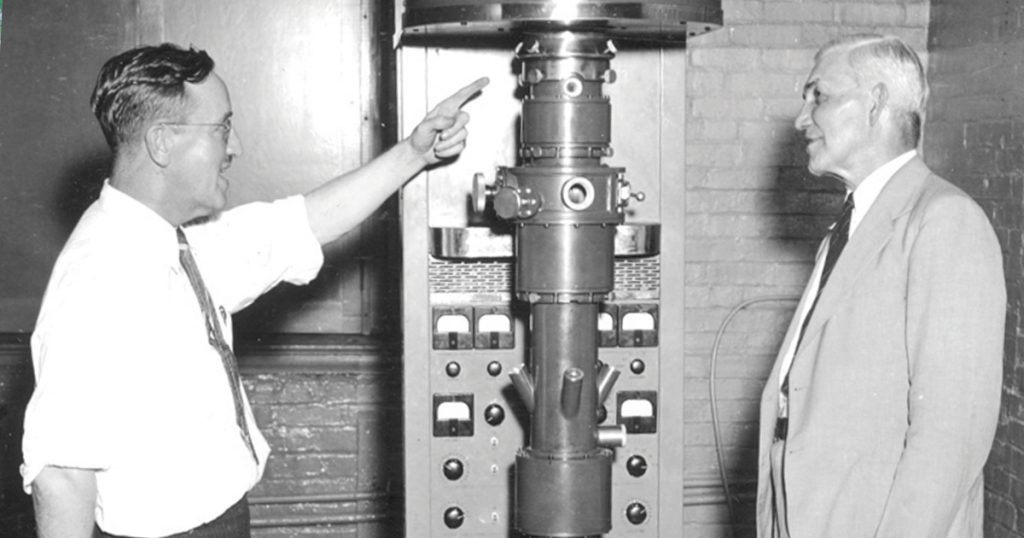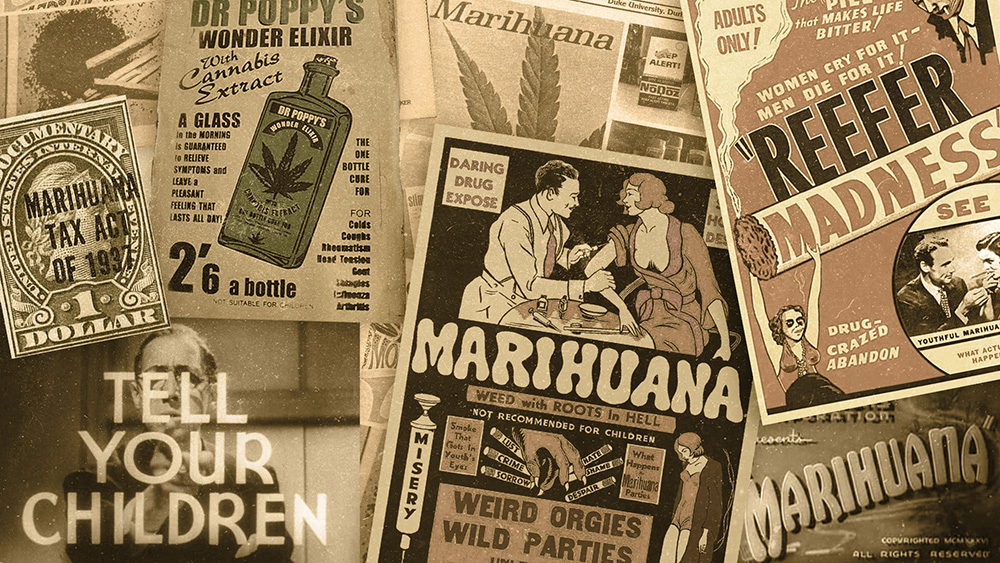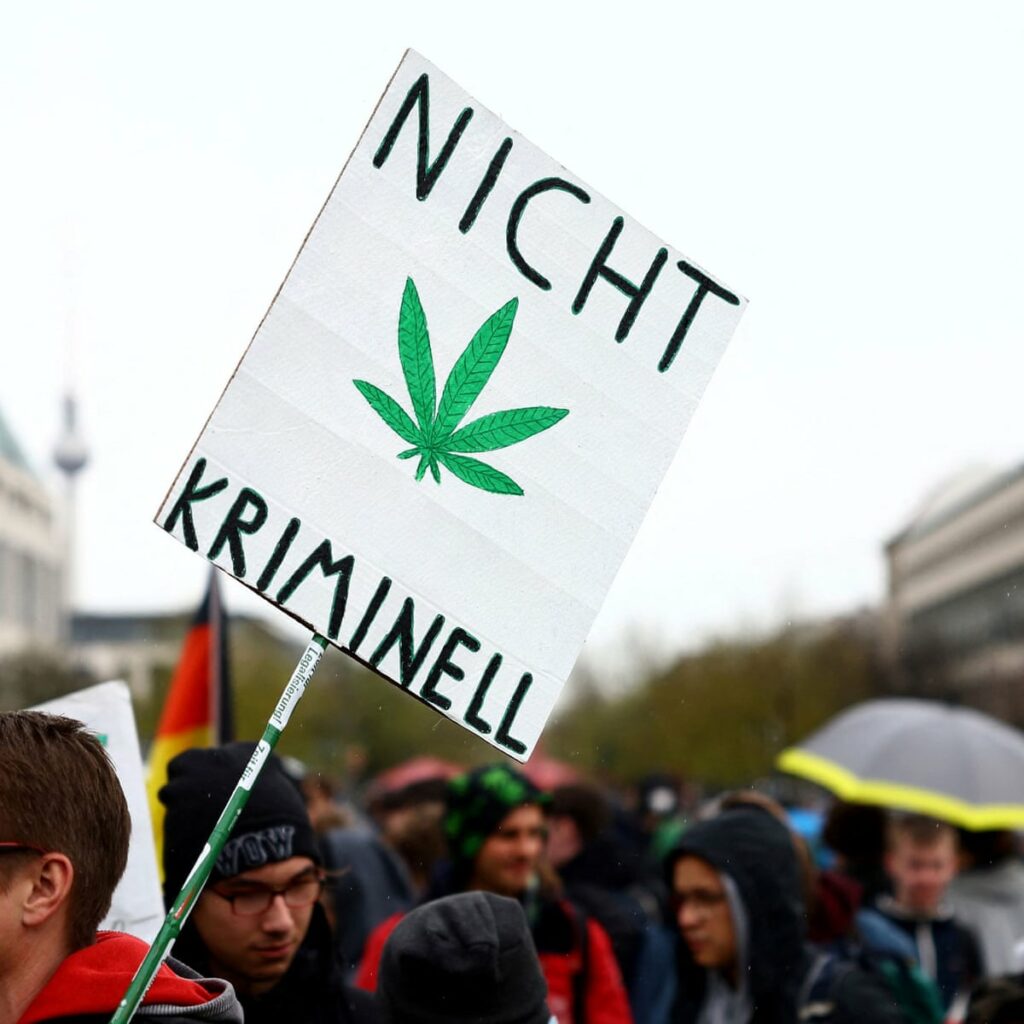CBD 101
Extra extra, read all about it!
Clued up: The best resources for news and scientific studies on CBD
Right now, cannabidiol (CBD) and cannabis research are still widely in their infancy. This is down to all kinds of things, including its relatively recent discovery, cannabis prohibition, lack of funding resources, and others. Sounds iffy right, but it’s important to put this in the context of historical events. These things have resulted in our current limitations in understanding the plant compound, even as other obstacles still create challenges in current-day research.
But here we are, and public and scientific interest in CBD continues to grow. That makes us one of the many eagerly waiting for new revelations and medical breakthroughs as the evidence and data catch up with market popularity. In the meantime, as well as providing trustworthy resources on the existing preliminary and clinical studies on CBD, here is an in-depth look at its history to debunk the current stage of cannabis science.
The discovery of CBD and subsequent research efforts

Image Credit: https://www.freedomleaf.com
Did you know that CBD was initially discovered in 1940? A scientist called Dr Roger Adams at the University of Illinois hit the jackpot when he successfully isolated the cannabinoid, although, despite this big revelation, Adams wasn’t aware of his success until many years later. Then animal research on the compound began in 1946 by Dr Walter S. Lowe, and his trials showcased the cannabinoid’s non-intoxicating effects.
Move along to Professor Raphael Mechoulam, AKA the “father of cannabis research”, who began his breakthrough studies in the early 1960s. He completed the most prevalent cannabinoid research conducted on tetrahydrocannabinol (THC) inspired by its widespread recreational use in the UK and other Western countries (thank you Swinging Sixties).
As a sort of bonus, Mechoulam’s successful isolation and identification of THC led to the identification of CBD’s three-dimensional structure. A happy coincidence, because since then, many of the recent scientific breakthroughs have been based on his work. Mechoulam’s research on cannabinoids also led to the mind-blowing discovery of the endocannabinoid system as well as endogenous cannabinoids produced in human biology.
Post-discovery of the endocannabinoid system, the International Cannabinoid Research Society (ICRS) was formed in 1992. These guys further investigated cannabinoids and this new physiological system. The US government-funded organization helped pave the way pioneer-style for current therapeutic strategies, all based on its research of the important correlation between the endocannabinoid system and its connection with chronic disease progression.
You’ve got to remember, this whole time in history, cannabis prohibition was at large, making it super difficult for researchers to conduct CBD and other cannabis studies. But then, a seismic moment happened in CBD research in 1998 when British pharmaceutical company GW Pharmaceuticals successfully obtained a cannabis growing license for its clinical trials. GW Pharmaceuticals’ co-founder, Geoffrey Guy, pursued these trials to create a cannabis-derived medication with high CBD content that had no mind-altering effects. In for the long game, GW Pharmaceuticals successfully created the first pharmaceutical drug containing CBD which was approved by the FDA in 2018.
What’s the hype on cannabis prohibition?
Being real, cannabis prohibition is the most significant factor in why our studies are so limited. That means we must understand how prohibition has stunted research in the past and the present and how those feed back into advocacy.
What caused cannabis prohibition in the US?

Image Credit: https://www.leafly.com/learn/legalization/marijuana-illegal-history
Rewind to the Mexican Revolution in 1920, when many Mexicans migrated to the US, and they brought their normalized cannabis culture with them. American politicians opposing immigration from the southern nation vilified Mexican Americans and marijuana, referring to the plant by its Spanish name “marihuana”. This marked the beginning of cannabis prohibition that began with 29 states outlawing cannabis by the early 1930s, and it was completely down to this smear campaign.
Years of fearmongering followed, spearheaded by newspaper tycoon William Randolph Hearst. He wanted to diminish the threat posed by hemp to his paper-producing companies, and this led to the propaganda film “Reefer Madness”, released in 1936. Once congress saw how states were prohibiting cannabis, they responded with the Marihuana Tax Act in 1937. But the federal government lacked the power to ban cannabis at the time so instead, it imposed significant taxes against anyone using the plant. Just putting this into context, there was a long history of hemp use in the US dating right back to 1606, but since both hemp and marijuana belong to the cannabis family, both plants fell victim to propaganda.
In 1951, Louisiana congressman Hale Boggs led the passing of the Boggs Act which created mandatory sentences for drug offenses throughout the US, including cannabis. The Marihuana Tax Act was repealed in 1969 with Timothy Leary, arguing that the Act required him to self-incriminate, violating the fifth amendment during his court case for possession of cannabis while crossing the border from Mexico into Texas.
The Marihuana Tax Act was abolished, but President Richard Nixon swooped in, passing the Controlled Substances Act in 1970. This set the framework for federal regulation and criminalization of drugs in which five categories were created for scheduling. Cannabis was placed under Schedule I, which is the category considered most dangerous with no medical use and significant potential for abuse. This classification of cannabis as a Schedule I drug alongside cocaine and heroin went a whole lot further to propagating misinformation about the plant family.
Next up, Nixon appointed Pennsylvania governor Raymond Shafer as the head of the National Commission on Marihuana and Drug Abuse to review all the existing research on cannabis for correct scheduling under the Controlled Substances Act. But despite Shafer’s 1972 report debunking all the myths about marijuana and recommendations for decriminalization, Nixon ignored it, and cannabis is still classified as a Schedule I drug today.
The reaching impact on current day science

Image Credit: The Guardian
Amid this miasma of fear and misinformation, since 1969, US researchers have only been allowed to use cannabis from one domestic source. That also meant the University of Mississippi facility was under a sole federal contract with the National Institute on Drug Use, creating a federal monopoly on researchable cannabis. This cannabis had many issues, impacting the quality and efficacy of all US-based cannabis research data:
- Moldy samples: The samples provided by the facility have been reported to be contaminated with mold and yeast. While that’s beyond bad, at the same time its potency didn’t match the chemical potency requested for corresponding studies. It had 8% THC while many smokable products available in legal dispensaries surpassed 20%.
- Poor quality: The cannabis provided has been described as a “powdery mishmash of stems, stick, and leaves”. Enough said.
- Lack of variety: With thousands of different cannabis strains with unique cannabinoid and chemical profiles that create unique clinical effects, you’ve got to have access to this diversity. But the facility only provided one type of undisclosed cultivar.
As a countermovement, the Multidisciplinary Association for Psychedelic Studies (MAPS) and Dr Sue Sisley sued the DEA along with other researchers for stonewalling cannabis research back in 2019. For decades, scientists have encountered administrative and legal hurdles to growing pharmaceutical-grade cannabis. After years of hard-fought legal battles, the DEA has processed the registration of several additional American companies for cannabis production for medical and scientific purposes in May 2021. This monumental achievement will enable the quality of cannabis research we’ve needed for decades.
The end of hemp prohibition

When it comes to hemp itself, the 2013 Farm Bill redefined industrial hemp, allowing pilot programs and research to be conducted on the plant. Hot on the heels of the passing of the bill, dozens of states defined hemp as a separate plant from marijuana, allowing its farmers to take advantage of the industrial hemp research and pilot program federal provisions. This paved the way for hemp-derived CBD research in 2014 among certain states.
Collective cheer here, because hemp became a federal commodity, and prohibition was also officially ended by the 2018 Farm Bill. The bill stated that all hemp produced under a lawful state program with 0.3% delta-9 THC or less would be federally legal. States had the option to either create their own hemp program that required USDA approval or to use the existing framework provided by the government agency. This end of hemp prohibition empowered hemp-derived CBD and other cannabinoid research throughout the nation.
The Best Scientific Resources for CBD Information

This muddle of historic prohibition means that the best US-based cannabis research is still ahead of us. Apparently, (so says the US National Library of Medicine) there are currently 299 ongoing clinical trials worldwide on CBD alone. Yet, clinical trials on average take seven to ten years to complete. As cannabis researchers have access to samples that are more representative of what’s available in the modern-day market, get ready for more clinical trials in the future.
While we buckle in for that, in the meanwhile here are the best resources that feature the current science on CBD, cannabinoids, and other cannabis compounds:
- US National Library of Medicine: This NIH-backed resource offers a must-read database of all the existing preclinical and clinical CBD studies available. You can find abstracts along with full trial results on all existing cannabis studies worldwide.
- Project CBD: Project CBD is a nonprofit dedicated to promoting and publicizing research on CBD’s medicinal use as well as other cannabis compounds. The excellent educational resource features science abstracts, interviews with leading cannabis researchers, articles on various conditions, and much more.
- MAPS: Founded in 1986, MAPS is a nonprofit organization specializing in research and education for the medical and legal use of marijuana and psychedelics. The organization is at the forefront of cannabis research and advocacy.
Finding the CBD Resources, You Need
There are some other great condition-specific resources available on CBD and it’s so worth researching this fascinating compound along with the other potential benefits that cannabinoids and terpenes have to offer. If you need us, the Hoo Raa team is here and happy to point you in the right direction of specific information around CBD questions. We’re dedicated to sharing the most recent developments in science and the industry and we’re on the edge of our seats waiting for the advancements the future holds. Contact us for more information!
Sharing is caring!
Holistic Therapy: Exploring Somatic Experiencing
In the quest for mental and emotional well-being, individuals often seek therapeutic approaches that go beyond traditional talk therapy. Holistic therapy, which addresses the interconnectedness of the mind, body, and...
Read article
Cannabis and Psychedelics: The Perfect Match?
Both cannabis and psychedelics alike have been buzzing around the wellness space over the last couple of years. With growing attention around their potential medical, social, and spiritual benefits –...
Read article
A Guide On Regenerative Farming
Regenerative agriculture has emerged as a promising and innovative approach to farming that not only seeks to produce food and fiber but also aims to restore and enhance the environment....
Read article
Plant-Based Meat vs. Real Meat
In recent years, plant-based meat alternatives have been gaining popularity, with many consumers choosing them over traditional animal-based meats. As the demand for plant-based products continues to grow, it raises...
Read article
The Art of Shibari
At Hoo Raa, we believe that intimacy is an art form that deserves to be explored and celebrated. That's why we're excited to introduce you to the captivating world of...
Read article
DIY CBD Recipes to Try at Home
Music festivals are an extraordinary celebration of art, creativity, and unity. Set the scene: the summer sun illuminates the sky, rhythmic sound waves fill the air, and the murmur of...
Read article
CBD Fitness Recovery Tips
Music festivals are an extraordinary celebration of art, creativity, and unity. Set the scene: the summer sun illuminates the sky, rhythmic sound waves fill the air, and the murmur of...
Read article
How CBD Can Elevate Your Experience at Music Festivals
Music festivals are an extraordinary celebration of art, creativity, and unity. Set the scene: the summer sun illuminates the sky, rhythmic sound waves fill the air, and the murmur of...
Read article
How CBD Can Help Unlock Your Artistic Potential
In the realm of artistic expression, the desire to tap into our creative potential is an ever-present force. Artists constantly seek inspiration, focus, and a means to unleash their imagination....
Read article
Kinky Boots: How to Explore Kinks
Let’s talk kink - a word that covers a vast array of unconventional sexual acts. Vanilla sex is great, but sometimes it’s just… too vanilla. If you get what we...
Read article
Edging 101 – Maximize your Pleasure
Edging is an orgasm control technique. Used to increase stamina, intensify orgasms and explore power exchanges in the bedroom, it involves a little thing called delayed gratification. In other words,...
Read article
Switch it off
Do you catch yourself scrolling mindlessly on social media? Losing track of time? Procrastinating on chores? Favoring screen time over friends and fam time? Can't seem to switch off at...
Read article
A Holistic Home: The Necessities for a Zen Space
Why is a zen space necessary? Life is hectic. It can be busy, draining, chaotic. And from time to time, life can become a bit too much. We all need...
Read article
Running out of sheep to count?
Ridiculously restorative, sink-in deep sleep. We might not all know her but we certainly dream about her. You know - the kind of sleep that heals every ache and generates...
Read article
Bottoms up
We love some good mixology and trying fun potions and concoctions whether that’s on a little self-date or enjoying quality time with our gang. As this year comes to a...
Read article
Naughty or nice
We’re turning up the heat this winter season by spicing it up with new traditions and setting the vibe for 2023. The holidays can quickly become jam-packed with festivities with...
Read article
Dealing with the fam during the festive period
Here’s a fun fact for you: according to one study, 88% of people experience holiday stress. That is when the festive period rolls around and we’re in close proximity with...
Read article
Yes, yes, YES! Make 2023 your best ever
We want to hear a hell yeah for the power of orgasms. Do your research and you’ll discover that the Big O has a long list of health benefits (more...
Read article
We’re having a microdosing moment
Master image copyright: Marius SperlichWe don’t doubt the term has probably crept up in convos with friends. Heard it on social? Maybe read something in an article? Or even in...
Read article
The ultimate traveling guide: taking a literal trip with CBD
Bags packed, essentials added, traveling outfit sorted (we vote sweats). Chances are, you’ve already nailed your luggage, checked weight restrictions, and everything else. But have you stashed your CBD in...
Read article


